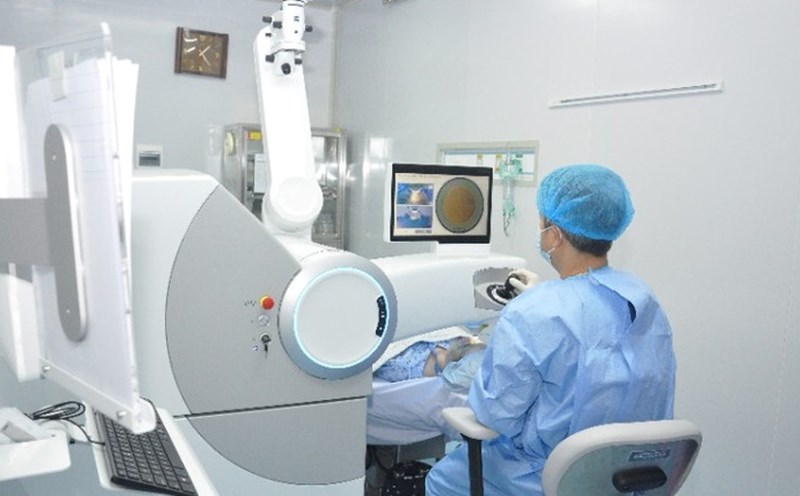At the scientific workshop on "Child's eye care from theory to practice" organized by Dong Do Hospital in collaboration with the Department of Ophthalmology - Refractive errors of Hanoi Medical University on the afternoon of August 26 in Hanoi, Dr. Dinh Thi Phuong Thuy - Executive Director of Dong Do Hospital - informed: According to the latest statistics from the Vietnam Dental Council in 2024, there are about 5 million children of school age, equivalent to 30-40% of children, suffering from refractive diseases such as myopia, hyperopia, and astigmatism.

Dr. Dinh Thi Phuong Thuy added: During her work journey, the hospital's doctors have witnessed many special circumstances, such as the case of Do Minh Quan, who was only 2 months old, who had congenital cataracts, while both parents were blind. Another case is Vu Ha Quang, 8 years old, who suffered from cerebral palsy and lost his vision after a serious illness...
Current reality shows that Vietnamese children are facing many visual problems, from common disorders such as refractive errors to serious diseases such as as astigmatism, eye bags, congenital hyperopia or eyelid twitching.
This rate is significantly higher in large cities such as Hanoi and Ho Chi Minh City - where more than 50% of children are recorded to have vision problems, mainly due to unscientific learning habits and excessive use of electronic devices for a long time. If not detected and adjusted promptly, these refractive errors can lead to myopia, also known as "lazy eyes" - one of the leading causes of long-term vision loss in young children.
If not detected and treated properly, it can lead to pharmacy. Myopia, also known as "lazy eyes," is accounting for 1-5% of children under 6 years old, equivalent to 100,000 to 500,000 children, if not detected and treated promptly, it can cause long-term vision loss.
In addition, about 2-4% of children, equivalent to 200,000 to 400,000 children, have symptoms of pimplegia and if not treated properly, can lead to myopia or other serious vision problems.
Another rare but dangerous disease is eyelid twitching - an uncontrolled eye movement, often associated with neurological disorders or congenital visual damage, is also a major concern for experts. Although not as common as other diseases, if not treated properly, eyelid twitching can cause irreversible vision damage.
The workshop also included in-depth, quality reports from two of the world's leading experts on diagnosis and treatment of streptococcus in children.











